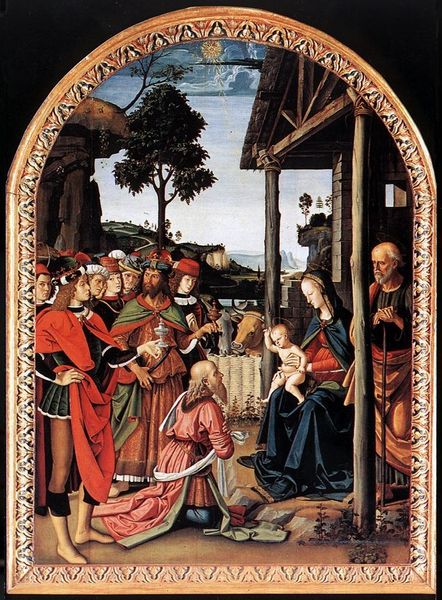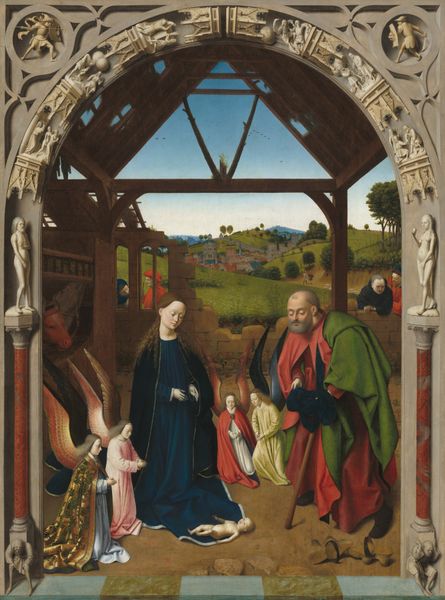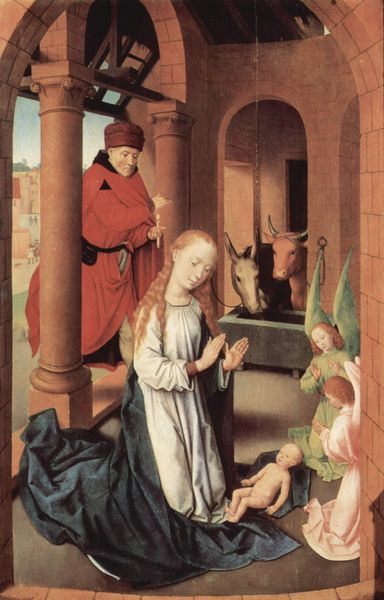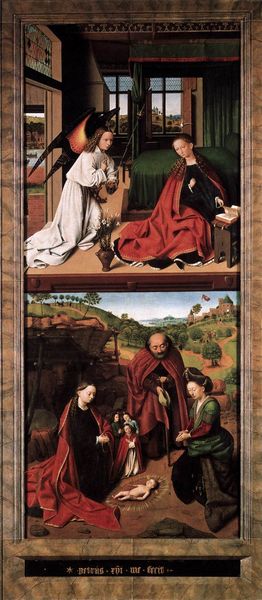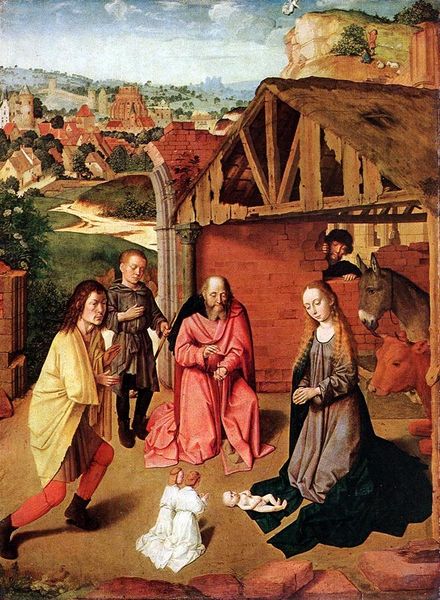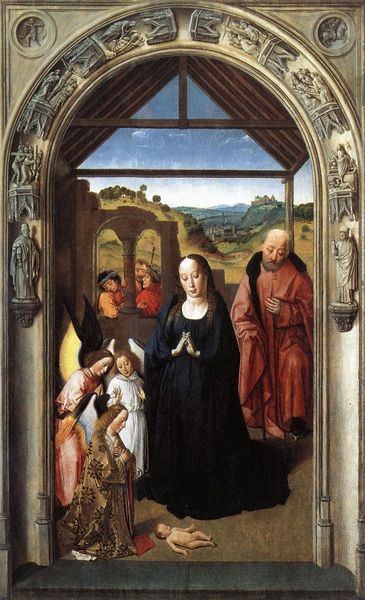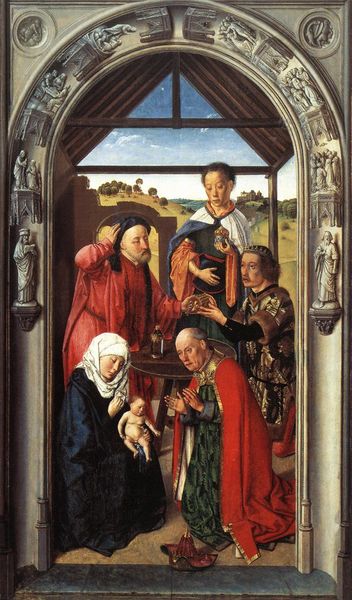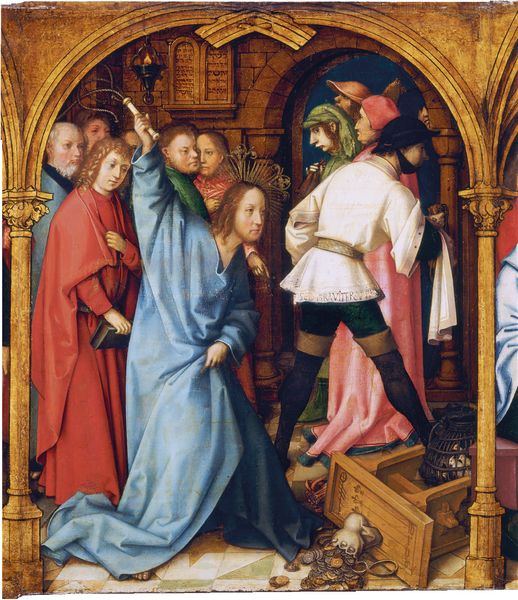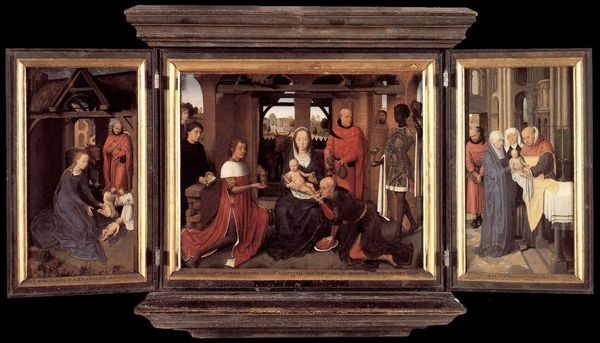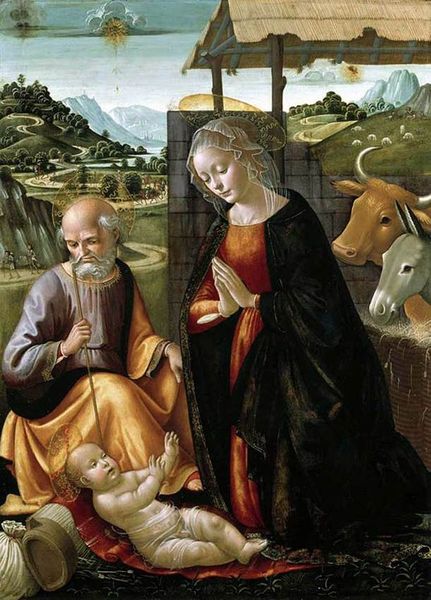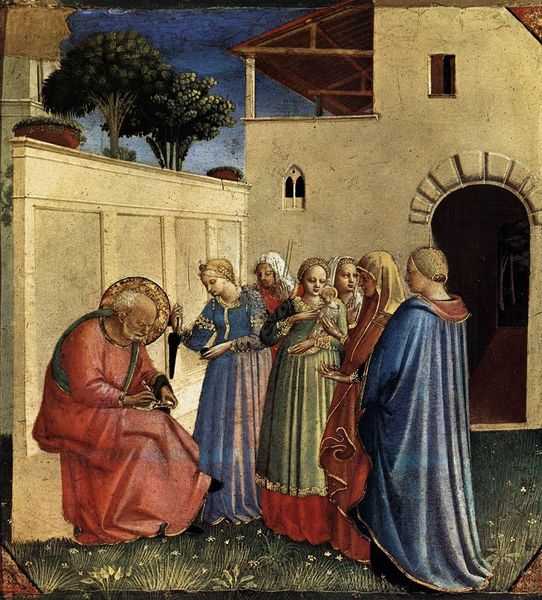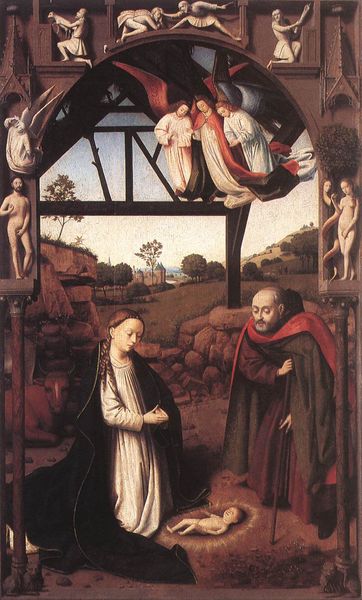
panel, painting, oil-paint
#
panel
#
narrative-art
#
painting
#
oil-paint
#
landscape
#
figuration
#
oil painting
#
jesus-christ
#
arch
#
christianity
#
history-painting
#
italian-renaissance
#
early-renaissance
#
virgin-mary
#
angel
#
christ
Dimensions: 130 x 97 cm
Copyright: Public domain
Curator: I find myself utterly transported by this oil on panel, "Nativity" completed in 1447 by Petrus Christus. Look at the gentle light, the somber faces and all these layers of texture: stone, timber, wings. What does it spark in you? Editor: A definite sense of quiet industry. It’s remarkable how Christus has rendered wood. The roughly hewn beams of the stable roof, patched and seemingly provisional, contrast so sharply with the radiant figures within. One can imagine the hands that felled those trees, shaped them. Curator: Exactly! It’s like the world’s oldest fixer-upper, right? I am also interested about the angels’ drapery. Each fabric fold is like a whispered secret about heaven, do you not think so? And the colors… reds, golds, blues swirling with almost dizzying intensity! It whispers hope into a bleak world. Editor: The drapery absolutely catches my eye as well. You mentioned color and how striking it is—particularly when considering the likely sourcing of these pigments. The ultramarine blue for Mary's cloak, derived from lapis lazuli… a stone traded across vast distances. Someone, somewhere, was labouring to provide that luxury. It frames the scene economically. Curator: So the materials really take you away, then, and do you think that those considerations might have guided some of Christus’s choices in representing the holy family so… intimately, you might even say, domestically? I almost get the sense of an “everyday family”, or does my own imagination simply run a little wild? Editor: “Everyday” feels almost too casual for this depiction. While Christus might be situating the divine within a recognisable, human context, I think we’re still firmly rooted in the realm of sacred depiction. Consider the composition – that stark foreground against the more traditional landscape background. Curator: You know, looking at that distant town perched on the hill through the rafters does feel like peeking through time itself, which of course makes one wonder… how much longer would this particular view survive within a rapidly modernizing Europe? I might start calling the view the soul of this piece, or at least that part of it, or does this sound somewhat insane? Editor: "Soul" might be pushing it a little, given it is primarily pigments suspended in oil. That external setting emphasizes something critical, I feel, regarding what is deemed sacred space. The stable itself becomes a threshold—between the immediate and the eternal. What exists on both sides has undergone significant labor to emerge. Curator: Well, all these different views truly provide even more room for contemplation, right? Editor: Indeed, whether one dwells on its material realities or ponders its spiritual symbolism, "Nativity" offers an extraordinary richness.
Comments
No comments
Be the first to comment and join the conversation on the ultimate creative platform.
